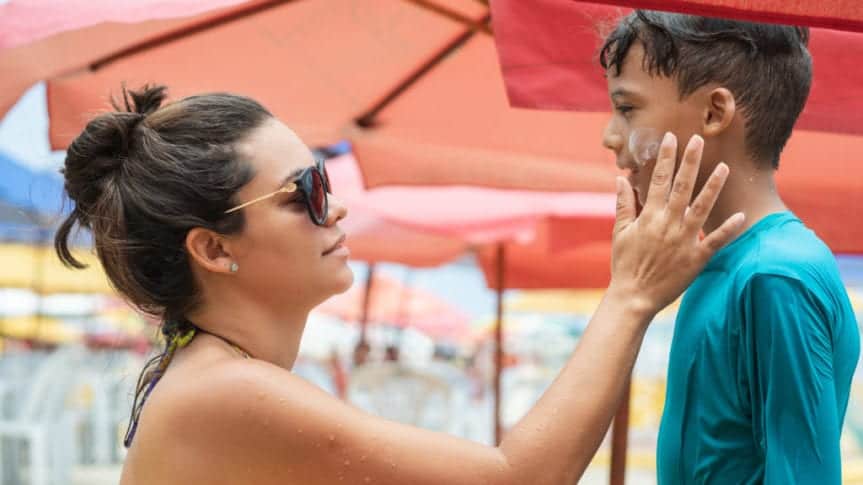What Parents Need to Know About Sunscreen, Sun Safety, and their Kids
Summer is synonymous with outdoor adventures and trips to the beach and pool, but unprotected exposure to the sun poses risks of skin and eye damage and other health concerns for children.
Damage from sun exposure collects over time and can even lead to skin cancer. Rachel Dawkins, M.D., medical director of the Pediatric and Adolescent Medicine Clinics at Johns Hopkins All Children’s Hospital, explains why it is important to protect kids from getting sunburned and how to protect skin.
Related: EWG's 2022 Guide to Sunscreens: Does your sunscreen make the cut?
What are the best ways to protect children from the sun?
- Seek shade and avoid midday sun exposure when ultraviolet (UV) rays are strongest.
- Cover up with long sleeves and long pants; tightly woven fabrics are the best.
- Wear a hat with a wide brim. Avoid baseball caps which protect the face, but not the ears and neck.
- Wear sunglasses to protect the eyes from UV rays.
- Apply sunscreen any time your child will be outside for any amount of time, even if it’s cloudy or not hot.
What type of sunscreen should I put on my child?
Pick a water-resistant, broad spectrum sunscreen that protects against UVA and UVB rays with a sun protection factor (SPF) of 30 or above. Apply sunscreen at least 15 minutes before sun exposure, reapply at least every two hours, and ensure it’s on every part of the skin including ears, nose and tops of feet. If your child won’t wear a hat, put sunscreen on their scalp especially near the part.
Can you put sunscreen on infants younger than 6 months?
Sunscreen is technically not recommended for babies under 6 months old, so instead parents should avoid sun exposure as much as possible. Keep the baby shaded, but keep in mind that strollers and tents only block about 50 percent of UV light. Make sure your child wears clothing that covers as much skin as possible and a hat with a wide brim. You can put sunscreen on infants, but they absorb more of the chemicals based on their surface area to weight ratio, so keeping them out of the sun is the best option.
How do I know if my child is getting sunburned and what should I do if they do get too much sun?
Unprotected skin can be damaged by the sun’s rays in as little as 15 minutes, but it can take up to 12 hours for the skin to show the full effects. If your child is starting to look “a little pink,” it’s time to get out of the sun.
If your child has a mild sunburn, cool water or compresses may soothe the skin. Acetaminophen can help with pain. Avoid sun exposure until skin is healed. Kids can lose extra fluid in the sun, so make sure to offer a lot of water to keep your child hydrated.
Lastly, if your child has a more severe sunburn with blisters, fever, chills, headache or other flu-like symptoms, call your pediatrician.
For more tips, visit HopkinsAllChildrens.org/Newsroom.
*Presented by Johns Hopkins All Children's Hospital
*Originally published in the July 2021 issue of Tampa Bay Parenting Magazine.


